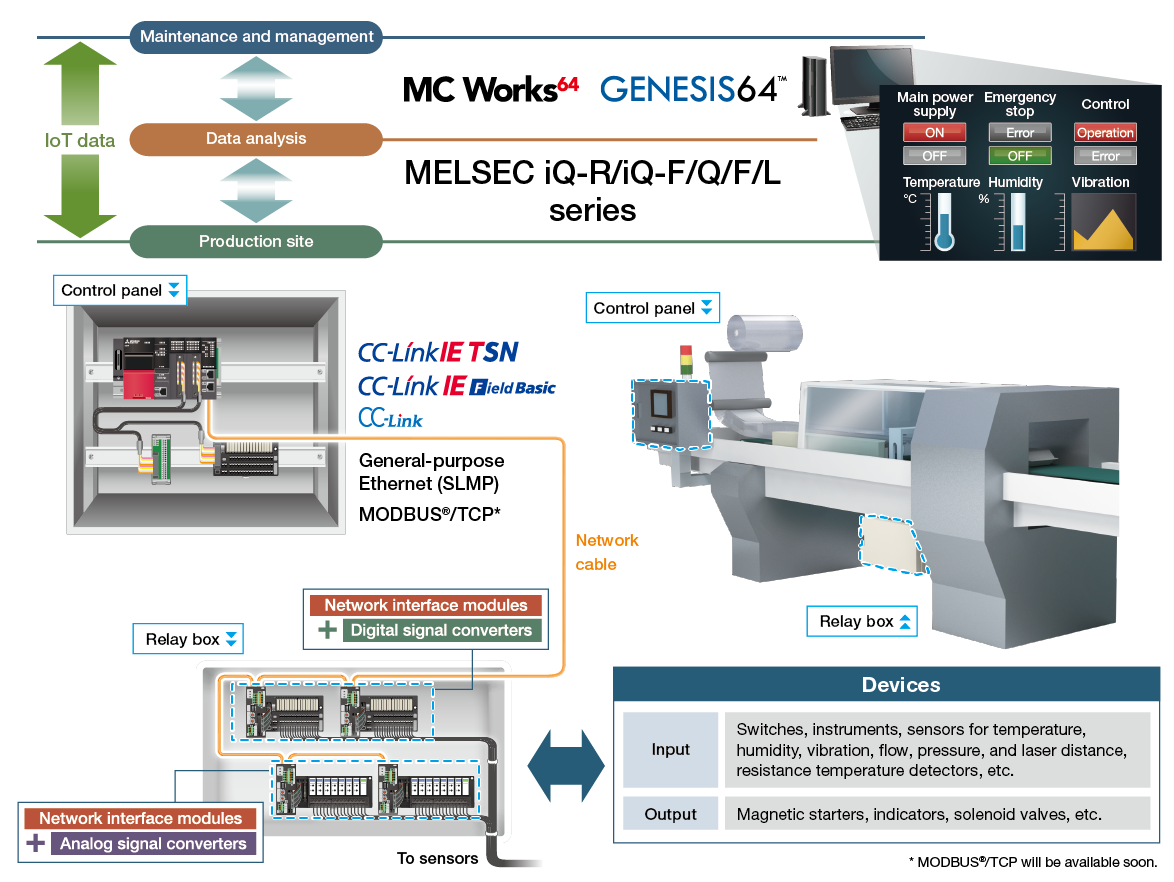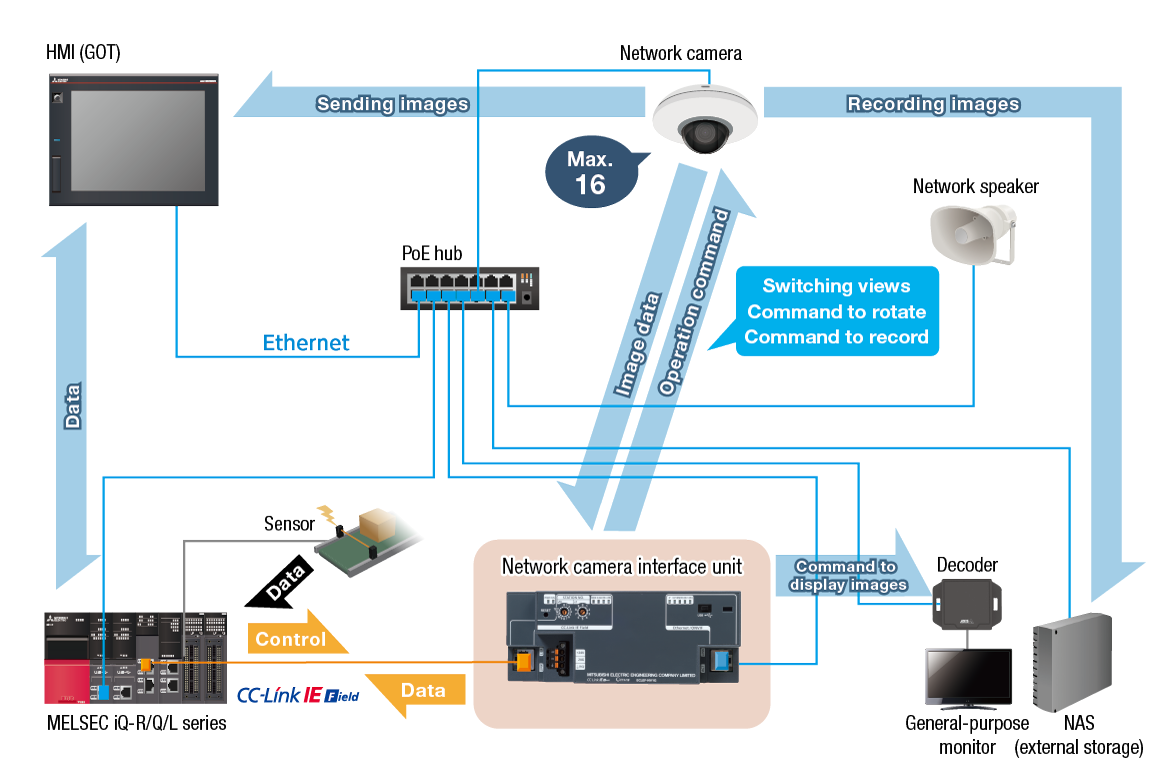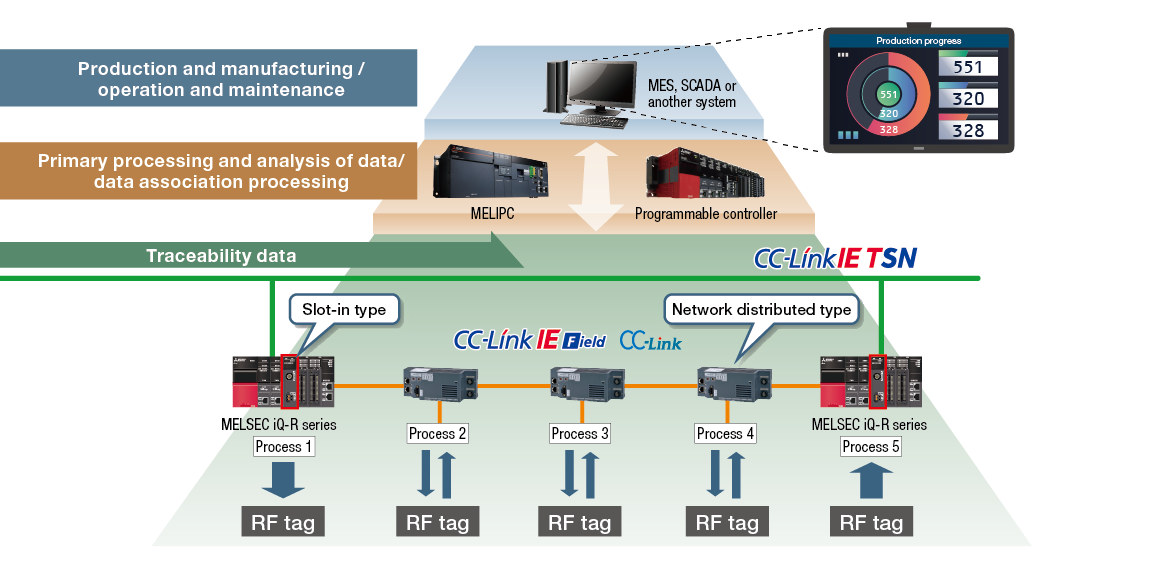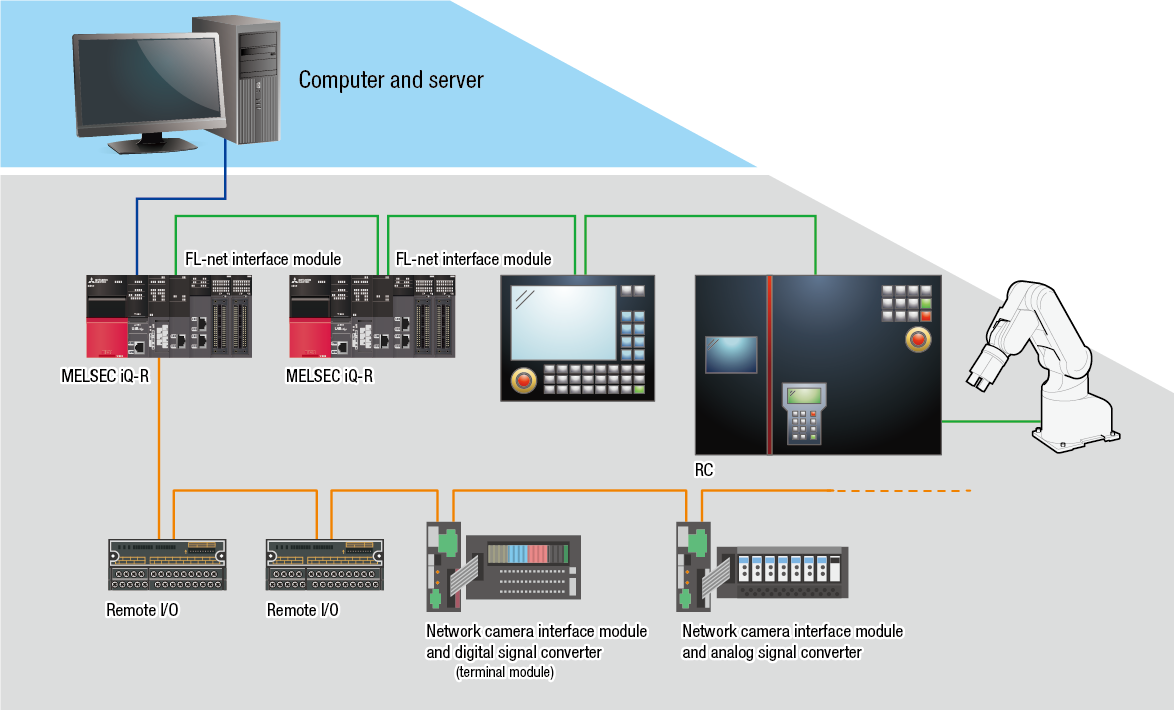Network devices: Implementing small-scale IoT to create innovative production sites
Concept
We provide products to be connected to industrial networks, which is necessary to rapidly-advancing introduction of IoT in factories.
We support introduction of IoT in factories by providing methods to use networks to visualize data and images and to link devices and machines, and providing contracted development of network devices.
Rich lineup
We provide products to be connected to industrial networks, which is necessary to rapidly-advancing introduction of IoT in factories.
We support introduction of IoT in factories by providing methods to use networks to visualize data and images and to link devices and machines, and providing contracted development of network devices.
Network interface modules
We support the movement towards implementing IoT in production sites via using networks to connect sensors and other devices that contribute to manufacturing processes.
Features
- Integrated Data Management by Small-scale IoT Data from devices is collected in upper hierarchical levels through a network, visualizing the data.
- Saving cost and time for wiring in panel and system
Wiring from the inside of the control panel to the device and relay box can be performed using only one CC-Link dedicated cable.
Wiring can be also simply performed when increasing devices. - Easy wiring
Our dedicated cables enable one-push connections between systems and signal converters. - Modular
Modules can be selected individually, which reduces cost and space.
Supported network
- CC-Link IE TSN, CC-Link IE Field Basic, Ethernet (SLMP), MODBUS TCP
- CC-Link
Network camera interface module
Trouble Monitoring and Early Resolution Using Network Cameras - Video Linkage between GOT and Network Cameras and Downtime Recording
Features
- Checking images of the production site using an HMI (GOT)
Camera shooting directions can be changed while checking images on the screen of the HMI (GOT). - Recording Images at Downtime (Drive Recorder Images) Recording can be triggered by the camera detection function or facility sensor.
- Sending images to a general-purpose monitor for large-scale split screen display
Images can be sent from multiple cameras to the HMI (GOT) or general-purpose monitor, and displayed images can be switched. - Voice messages via a speaker
Error messages or other messages are given by voice using a network speaker.
Supported network
- CC-Link IE Field
Products presented here
RFID interface module
Features
- Upgrades to High-speed Communication/Large Data Amounts Bus direct type models enable high-speed data communication with programmable controller CPU modules.
- Using an existing system Bus direct connection programs can be reused with our MELSEQ-Q series
- Robust Testing and Measuring Features Communication testing between the antenna and RF tags and other convenient diagnostics can be performed during startup and maintenance.
Supported network
- CC-Link IE Field
- CC-Link
Products presented here
FL-net-compatible CC-Link interface module
Build FL-net systems with the MELSEC iQ-R series.
PLCs and computerized numerical controllers (CNCs) from other manufacturers as well as personal computers and such can all be interconnected for better control and monitoring.
Features
- Easy Programming The module supports the functions of Mitsubishi Electric GX Works3, making users' programming easier.
- Two communication features that can be selected according to the application 1) Common memory feature allows each node to always share the same data via cyclic transmission. 2) Message communication feature exchanges only the necessary information when required.
- Masterless and large-scale network
Masterless method enables users to connect/disconnect each node to/from the network at any time without affecting communications of other nodes. Users can freely power on/off any node, perform maintenance, and connect a maximum of 254 devices*1. *1 249 devices out of 254 devices can be used as control devices. The other five devices are used for failure diagnostics.
Supported network
- FL-net




